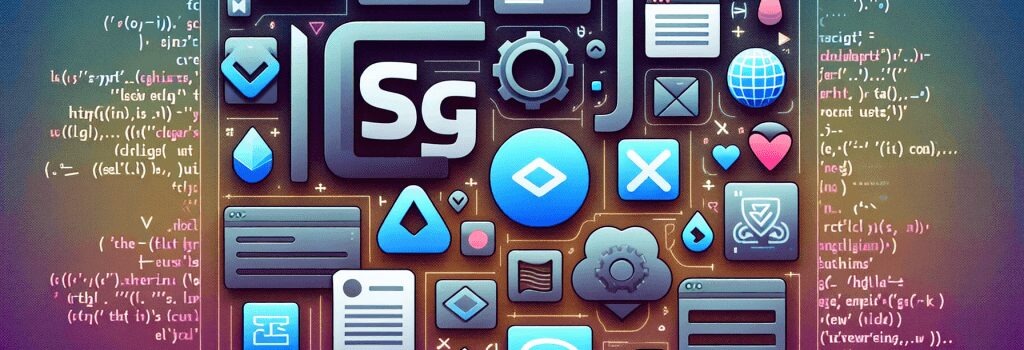Scalable Vector Graphics (SVG) with HTML and CSS

In the fascinating world of web design and development, there are some concepts that are so important, they’re like dogs. Not the kind you keep around your house to bark at everything that moves, but the kind you want on your side when you’re trying to break through that pesky pile of complicated code – or fetch the letters from your coding mailbox. Today, we’re going to talk about one such concept, the Scalable Vector Graphics (SVG)!
What is SVG, You Ask?
For all you coding rookies out there, SVG is a part of the XML family, and if that’s starting to sound like a marriage of ‘Stark’ and ‘Targaryen’ to you, don’t worry, there are no dragons here! Just plain, friendly SVG, which stands for Scalable Vector Graphics. By using SVG, you can generate exciting graphics for your website that won’t pixelate or lose their charm, no matter the size of the display.
Let’s Dive into the SVG Ocean
Now, some might think of SVG as a designer’s hammer drill, but don’t be alarmed. It’s not nearly as hard or scary as it might look. The trick lies in understanding the path, lines, and curves that are the cornerstone of SVG. Let’s break it down:
Path
Consider the ‘Path’ as the interstate highway connecting different points (coordinates) on your SVG map. This path is defined by using tag which forms a line from one point to another.
Lines & Curves
Lines and curves can be seen as the fellow motorists on the SVG highway. Just like you’ve got curves and lines on a race track, these elements help outline your SVG shapes.
Injecting SVG into HTML
Now, how do you fit this SVG creature into the HTML universe? It’s pretty simple. Just use the tag and make it a part of your HTML family.
Styling SVG with CSS
Oh, SVG is not a hermit! Yes, you can absolutely deck up SVG styles using CSS. Think of it as putting decorative armor on your SVG knights. Use the ‘fill’ property for colors and ‘stroke’ for defining the border. You can use regular CSS properties like color, width, border, and more to make your SVG look like a royal guest at an HTML party.
Remember, the world of SVG is as vast as it is exciting. So, don’t be shy about exploring. Sure, you might end up in the weird forest of SVG animations or the murky river of SVG gradients, but that’s all part of the adventure!
And there you have it, folks! This has been your quick and whimsical intro to SVG with HTML and CSS. Remember, the secret to becoming a coding wizard is practice. So, go ahead, create your first SVG, make it dance, make it shine, unleash your coding magic!


